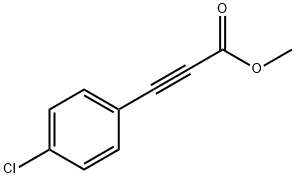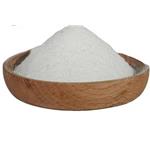Uses
2-Propynoic acid, 3-(4-chlorophenyl)-, methyl ester has potential applications in medical research, environmental research, and industrial research.
In medical research, the compound has been studied for its role in drug development. It has shown promising results as an anticancer agent and is being evaluated in clinical trials. The benefits and potential side effects of this compound are still under investigation.
In environmental research, the compound has been studied for its effects on ecosystems and its role in pollution management. The compound has been reported to have toxic effects on aquatic organisms, and its use should be regulated to minimize its environmental impact.
In industrial research, the compound has potential use in manufacturing processes to improve product quality and efficiency. Health and safety considerations should be taken into account when handling this compound in an industrial setting.
Description
2-Propynoic acid, 3-(4-chlorophenyl)-, methyl ester, also known as Methyl 3-(4-Chlorophenyl)propiolate, is a chemical compound that belongs to the class of propynoic acid derivatives. This compound has gained significant attention in the scientific community due to its potential biological and industrial applications. It can be achieved through various methods, the commonly used method is the reaction of 4-chlorobenzaldehyde with propargyl alcohol in the presence of a base such as potassium carbonate. The resulting product is then esterified with methanol to obtain 2-Propynoic acid, 3-(4-chlorophenyl)-, methyl ester.
Biological Activity
The biological activity of 2-Propynoic acid, 3-(4-chlorophenyl)-, methyl ester is attributed to its ability to inhibit the activity of histone deacetylases (HDACs) which are enzymes that play a crucial role in the regulation of gene expression. This ability leads to the accumulation of acetylated histones, which results in the activation of tumor suppressor genes and the inhibition of oncogenes.
Synthesis
The synthesis of 2-Propynoic acid, 3-(4-chlorophenyl)-, methyl ester is as follows:
Into a 10 mL reaction tube was added 212 mg methyl-3-(4-chlorophenyl)-3-oxopropionic acid (1.0 mmol), 608 mg DBU (4.0 mmol), 7.5 mL DMSO, and a balloon filled with sulfuryl fluoride gas for a long time. In the form of a needle, air is bubbling below the liquid surface. The reaction system was reacted at room temperature for 3 hours. The progress of the reaction was detected by a thin layer chromatography plate. After the reaction was completed, the rotary evaporator was used to spin dry, and the residue was purified by silica gel column chromatography. The eluent was petroleum ether:ethyl acetate=10:1, to obtain methyl- 3-(4-Chlorophenyl)propynoic acid (165 mg, 85%).




